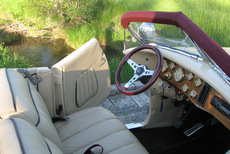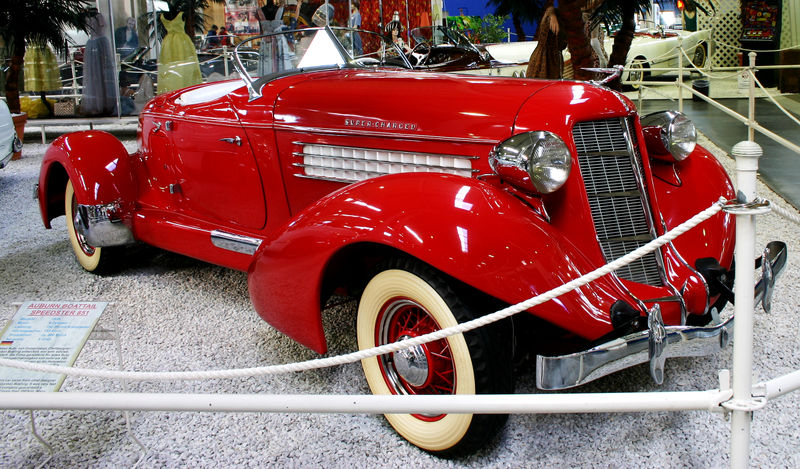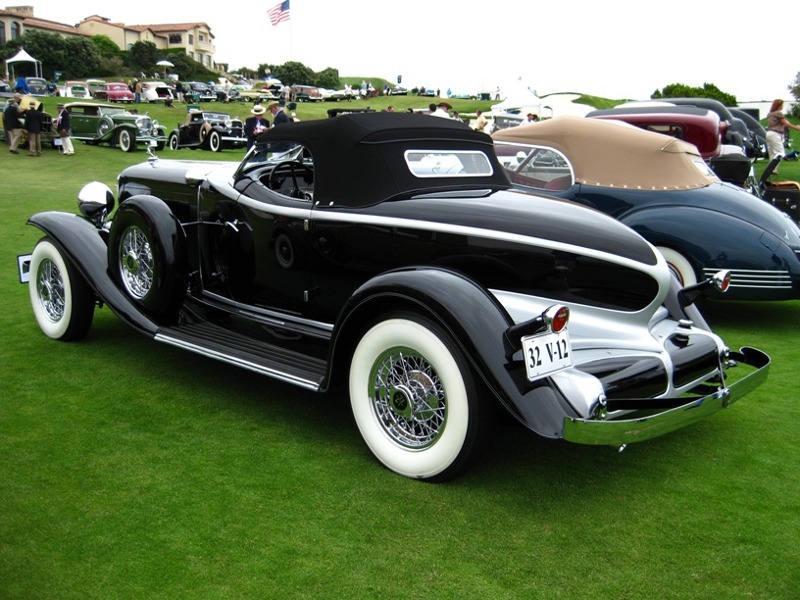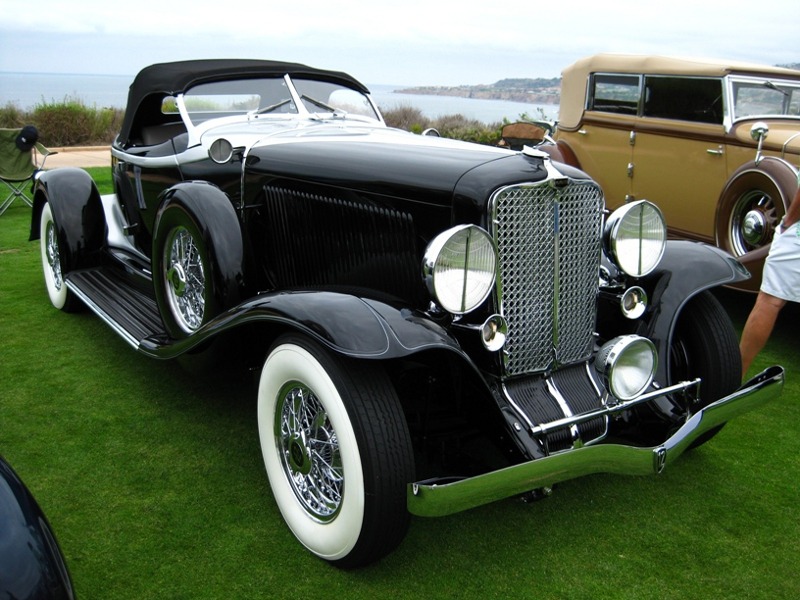Back in 1875 Charles Eckhart (1841–1915), a young American full of entrepreneurial spirit, founded a successful Carriage Company in Indiana. Over 100 years, his company had earned a good name and respect of the clients. And there were even rumours circulating in the town of Auburn that Eckhart’s sons, Frank and Morris, were making automobiles on an experimental basis. A small state of a big country was promising them a bright future. Quite soon, the Auburn Automobile Company became one of the gears necessary to ensure the work of the entire enterprise. By 1909 the ambitious Eckharts had founded their own automobile plant and their company took over two local manufacturers straight away. The brothers continued their experiments till World War I, when they faced materials shortages.
In 1919 a group of Chicago investors, headed by Ralph Austin Bard, acquired the plant and managed to bring the enterprise back to life. However, their expectations have never materialised, as all the profit vanished into thin air. Only back in 1924 Errett Lobban Cord (1894–1974), a highly successful salesman, managed to revive the stagnated business. Two years later Cord, in cooperation with Duesenberg Corporation, renowned for its race cars, used the Auburn Automobile Company for building an entire lineup of luxury cars. Errett Lobban named the first front-wheel drive (!) car produced at their plant after himself. Later on this model was referred to as «L-29».
Under Cord’s supervision, the engineers Alan Leamy (the one who designed the 1933 Speedster) and Gordon Buehrig (responsible for the 1935 Speedster 851 and its four-door modification) created this brand’s most famous and popular models — Duesenberg Model J, Auburn Speedster 1935–1937, and Cord 810/812.
Auburn Speedster was one of the few pre-war sports cars we know about, which were both powerful and elegant. First Speedster vehicles designed by the Russian count Alexey Sakhnovky rolled off the production lines in 1928. They resembled the Duesenberg Model X Speedsters designed by Alan Leamy and were fitted with in-line 8-cylinder Lycoming engines. Next year’s model was designed by Wade Norton. It featured a streamlined aluminium body, two basket aircraft seats, motorcycle wings, and was only 1.47-m high. This single vehicle was destroyed by its creator in the period of depression.
Powered by endless enthusiasm of Gordon Buehrig, the work at the company was humming. It was then when the first 6.4-litre V12 engine appeared. Gordon managed to make this “iron heart” deliver 160 hp. It’s not an easy task to find a similar motor nowadays. It is used only in the American LaFrance fire vehicles. In 1932 a car fitted with a V12 was able to accelerate to a stunning speed of 188 km/h. However, two years later the model was taken out of production.
At that time Gordon Buehrig was heading Duesenberg just nominally under the “ex” category. That is why he had enough time for creative work. He found himself in the Auburn company just to develop the new engine. Gordon sank the radiator, maximising streamlining of a car, and cut down the car’s weight being guided by the “less decorations” motto. Auburn’s large stubby bonnet, popularly called “boat tail”, was covering the innovation. A sensation! A supercharger hiding inside became a real breakthrough in car manufacturing.
This feat of engineering was equipped with an eight-cylinder 4.6-litre Ford Windzor engine coupled with a Cummins supercharger. Top speed of this vehicle reached 100 mph, while its motor was delivering 150.1 hp. The Auburn Eight Boattail Speedster featured a manual three-speed gearbox. Moreover, the car was fitted with power steering.
It’s a model with a recessed radiator, teardrop-shaped fenders, small two-seat cabin, tiny windshield, and shiny side chrome-plated exhaust pipes. The luggage compartment was accessible only through a side hatch, which used to suit golfers only. One of the car’s features was the shiftable main gear — “Low” for fast acceleration and “High” for moving at high speed and low revs. During the tests, the 851 model was able to demonstrate an average speed of 165.6 km/h during a 12-hour continuous run.
This was how Gordon Buehrig created his famed 851 model with the funny “Boat tail” nickname — a car destined to become a forgotten legend…
The Auburn Boattail Speedster 851 was distinguishably stylish and had an original exterior, setting it against other vehicles built in the 20th century. It was provocatively bright, came in various colour schemes, and was extremely popular in Hollywood. Its nickel-plated body painted in two colours is still shamelessly gleaming with different shades of saturation.
When you see an Auburn, it is difficult to turn your eyes away — you just cannot help admiring it. The seats upholstered in pleated cloth thrill you immediately when you think about the tender girls’ fingers, which used to sew these wonderful covers. Carpet-covered floor has always been tempting young women to take off their tight shoes and enjoy the comfort of a luxurious coupé. True husbands and family men liked the spacious luggage compartment, which could fit all the baggage and the entire traveller’s package.
A four-seat version of the sports sedan was perfect for giving a ride to two “casual” guest-passengers whether they were travelling from a golf club, a fashion house, or another sensational exhibition, which gets the Americans hooked so easily on luxury, comfort, power, and, which is even more important, value for money factor.
Someone might say: “It’s not the fastest, not the best-handled, and even not the most high-bred one”. However… should we cast away a masterpiece like that just because its wheels do not turn? Or those round things are not well-handled enough? And it’s not important, whether it’s a prevailing feature of a vehicle or not. The Speedster model compared to a modern coupé looks like a pedal-operated child's toy; however, back in the 30s this car was inspiring everyone with respect.
Any Auburn 851 Speedster “is the very picture of American luxury. The only purpose of this car is to slowly drive along Fifth Avenue, puffing a big cigar and graciously listening to rhapsodic exclamations coming from all sides” (a comment made by Top Gear’s Jeremy Clarkson).
Just a few lucky models were able to live to this day. The boats, which experienced the joy of renovation and felt the roar of the working engine again.

The 1935 Auburn 851 Supercharged Boattail Speedster was sold at the price of only $376,000. However, while all the other Auburn Boattail Speedsters were living quiet lives of privacy, this car took part in the 1936 romantic comedy hit “Desire”, starring Gary Cooper and Marlene Dietrich.
This Hollywood star is highly praised by its owner-restorer, who always brings this jewel of the 20th century's automotive industry to the Pebble Beach Concours d'Elegance show with great enthusiasm. Of course, this couple could not leave the hearts of judges unaffected. This model was awarded with the Level 1 certification of the retro car club.
Well, of course, there are even more expensive units of this luxurious sports car; however, they cannot boast of such eminent stories. The beginning of the Great Depression spelled the end of the company. Manufacturing ceased in 1937. The company's art deco headquarters now houses the Auburn Cord Duesenberg Automobile Museum. It became a National Historic Landmark in 2005.
Any aristocracy comes to an end one day.













